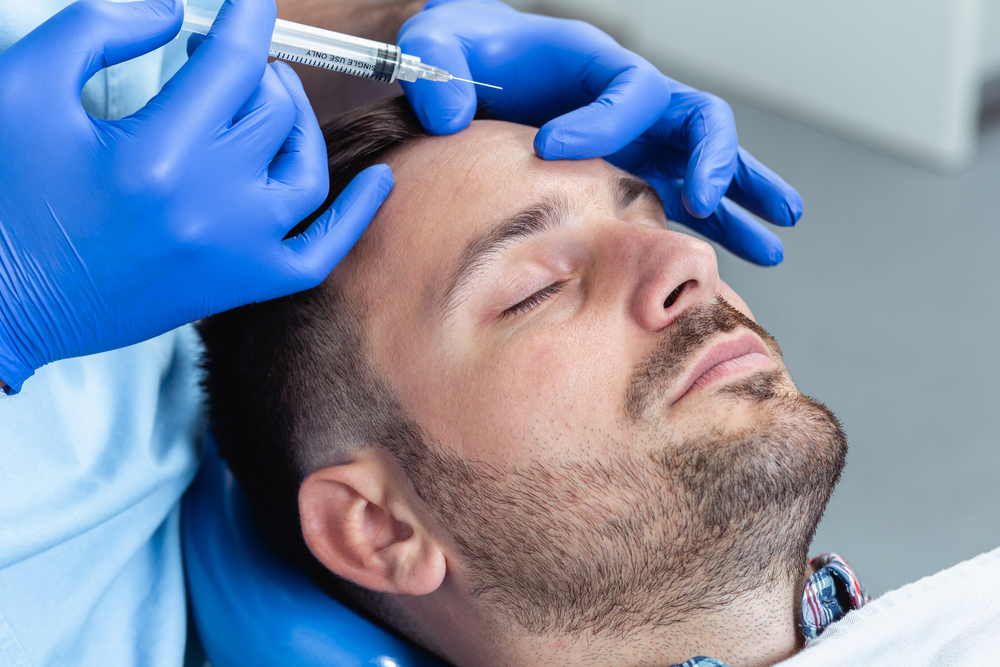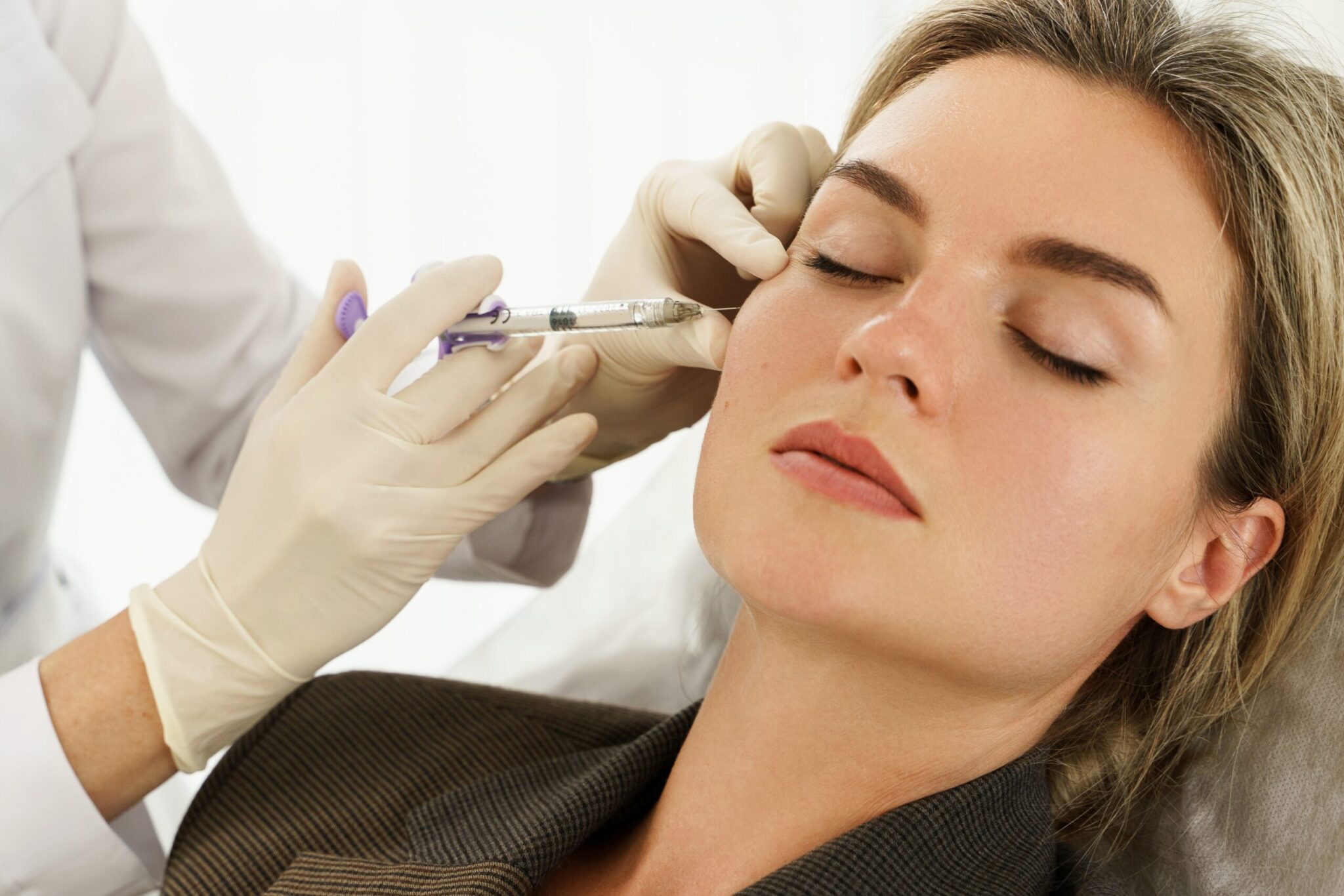
Botox and Dermal Fillers
Fine lines, deep wrinkles, saggy skin, and flattened cheeks may be part of the normal aging process, but that doesn’t mean you have to live with them.
Dr. Carla Bustillo ,DMD , offers a complete menu of anti-aging injectable treatments, including Botox® Cosmetic, dermal fillers and treatments for TMJ.
How does Botox work?
Botox Cosmetic (Type A) is a natural, purified protein that helps erase fine lines and drastically reduce the appearance of deep wrinkles safely, effectively, and with beautiful, long-lasting results.
Formulated from the bacterium Clostridium botulinum, Botox Cosmetic is a neurotoxin that works by blocking the nerve signals that cause your facial muscles to contract.
When injected in small amounts at specific points in your face, it relaxes the underlying muscles, decreases the appearance of lines and wrinkles, and leaves your skin looking naturally smooth.
Which wrinkles does Botox target?
Botox is one of the most effective cosmetic tools for the temporary reduction of dynamic wrinkles or the deep lines created by repeated facial muscle patterns and everyday facial expressions. It’s FDA-approved to reduce the appearance of:
Although Botox is mainly used to target deep wrinkles, it has a noticeable smoothing effect on nearby static wrinkles or the finer lines caused by external factors, such as sun damage.

What are Dermal Fillers?
Wrinkles may show up on your skin, but they aren’t simply a surface issue — as you age, your face naturally loses some of its subcutaneous fat and volume, making fine lines and wrinkles even more noticeable.
Made with hyaluronic acid, collagen, and other pure substances, dermal fillers are minimally invasive cosmetic injectables designed to rejuvenate your skin and restore lost volume from the inside out.
When skillfully injected into just the right areas, they act to temporarily reverse age-related facial deflation, erase fine lines, and smooth out deep wrinkles and furrows.
How can dermal fillers help me?
Dermal fillers are one of the most commonly requested aesthetic treatments and for good reason: They deliver beautiful, long-lasting results with little to no downtime and few potential risks or side effects.
Depending on your cosmetic goals, Dr. Bustillo can use dermal fillers to diminish deep wrinkles around your eyes, brow, or mouth. She can also use them to flesh out your cheeks, change the contour of your jawline, or even subtly enhance your lips.
Individual results may vary
TMJ is an acronym for the Temporomandibular Joints (TMJ)— the joints that connect your jaw to your skull. These two joints are the hinges that allows you to open and close your mouth. Although it seems that most of the movement is at the mouth, these joints actually internally slide and rotate in front of your ears. When the joints and surrounding muscles are out of harmony, it creates uncomfortable symptoms it is known as Temporomandibular Disorder(TMD).
Botox® as an Alternative Treatment for TMJ
Temporomandibular joint disorders (TMJD or TMJ), are notoriously difficult to diagnose and treat. Many of the related symptoms, such as headaches and earaches, often lead doctors to diagnose a sinus condition, as opposed to a problem with the jaw joint. TMJ symptoms often change in severity, depending on how much stress the sufferer is experiencing. During an intensely stressful period, grinding teeth, debilitating earaches, and lockjaw may occur. Botox® injections are sometimes an effective and painless way to alleviate tension in the temporomandibular joint, reducing jaw pain, headaches, and suffering.
Botox® is commonly associated with cosmetic practices, including eliminating glabellar lines and facial wrinkles. Recently however, Botox® has become an increasingly popular TMJ treatment. Although some TMJ symptoms may improve without any specific treatment, Botox® offers fast and long-lasting relief for those that do not.
Here are several of the major benefits Botox® offers TMJ sufferers:
How does Botox® work for TMJ?
The temporomandibular joint is located on both sides of the head where the skull adjoins the jawbone. This joint is constantly being used for a variety of daily activities, such as chewing, biting, speaking, and swallowing. The most prominent causes of TMJ are jaw displacement and stress-related involuntary jaw movements. Botox® expediently alleviates temporomandibular tension by relaxing the jaw muscles, thus preventing unconscious jaw movement and ending grinding-related headaches.
One of the major advantages of Botox® is that normal functions such as speaking, swallowing, and biting are left unaffected. The only major change is the reduction in pain and discomfort. In addition, controlling TMJ can also prevent serious dental problems from occurring later. TMJ, if left untreated, can contribute to tooth decay, gum disease, and the loosening of teeth.

